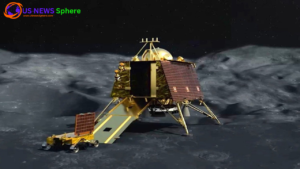New Insights into Earth’s Inner Core: Potential Volcanoes and Landslides Discovered
Recent studies have unveiled dynamic processes within Earth’s inner core, suggesting the presence of phenomena akin to “volcanoes” and “landslides.” This groundbreaking discovery is reshaping our understanding of Earth’s deepest layer, previously thought to be a static, solid mass.
The Dynamic Nature of Earth’s Inner Core
Seismologists have long believed that Earth’s inner core was a stable, solid iron sphere. However, new seismic data reveals that it’s far more dynamic. Researchers analyzing seismic waves from powerful earthquakes, especially those near the South Sandwich Islands, discovered irregularities indicating that the inner core is not just slowing in its rotation but also undergoing structural changes.
John Vidale, a renowned geophysicist at the University of Southern California, explains that these disturbances could be the result of processes similar to “volcanoes” releasing materials and internal “landslides” shifting within the core. While these terms are metaphorical, they help describe the complex and active environment deep beneath Earth’s surface. Vidale suggests that turbulent movements in the outer core are likely responsible for these dynamic interactions.
How Seismic Waves Reveal the Secrets Within
The research involved comparing seismic wave data from repeated earthquakes over the past decades. Changes in the travel times and behaviors of these waves as they passed through the inner core suggested shifts in its structure. The core’s surface appears to respond dynamically to forces such as Earth’s rotation and magnetic field fluctuations, which further influence its internal movements.
These findings imply that the inner core is not a uniform, motionless sphere but a complex, evolving structure with active geological processes. Understanding these processes is crucial because the inner core plays a vital role in generating Earth’s magnetic field, which protects the planet from harmful solar radiation.
Broader Implications for Earth’s Magnetic Field
The discovery has far-reaching implications. The inner core’s dynamic behavior could impact the stability of Earth’s magnetic field, which is essential for navigation systems, satellite operations, and even animal migration patterns. As the core evolves, it may influence geomagnetic phenomena, potentially affecting modern technology reliant on magnetic orientation.

Conclusion: A New Chapter in Earth Science
This discovery challenges long-held beliefs about Earth’s inner core, opening new avenues for scientific exploration. As researchers continue to analyze seismic data, we may uncover more about the core’s dynamic nature and its influence on our planet’s magnetic field and geological stability. Understanding these processes not only enriches our knowledge of Earth’s interior but also prepares us for potential future impacts on technology and natural systems.
For further scientific insight, check out this detailed study from Live Science, which delves deeper into the seismic data and geological interpretations. [USnewsSphere.com]





